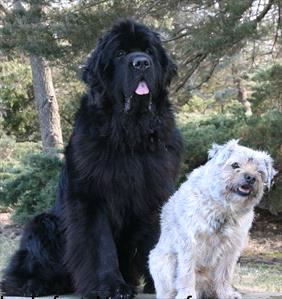Raster & Banter

Here’s a question I get a lot that I’ve posted about before:
I am immunocompromised, is it safe for me for my pet to get a modified live vaccine?
Or
A client came in and said their physician told them their pet should only receive killed vaccines.
Here is a little background first: Killed vaccines contain dead (inactive) viruses or bacteria, or bits of them. There’s nothing “alive” in the vaccine that can replicate, but the immune system can still respond to the fragments of the target pathogen. Modified live vaccines (MLVs) use strains of a virus or bacterium that have been weakened so they don’t cause disease, but it’s still an active (“live”) microbe. In general, modified live vaccines are ideal since they stimulate an immune response that’s stronger and more comparable to what happens when the body encounters the normal (“wild type”) equivalent of the bug in the vaccine.
However, there can be risks with MLVs to people (and sometimes animals) with compromised immune systems, since even those weakened bacteria or viruses might cause disease in rare circumstances.
The Canadian Immunization Guide states “In general, people who are severely immunocompromised or in whom immune status is uncertain should not receive live vaccines because of the risk of disease caused by the vaccine strains. In less severely immunocompromised people, the benefits of vaccination with routinely recommended live vaccines may outweigh risks.” These guidelines are focused on vaccines against human diseases and the emphasis on people with severely compromised immune systems is important to note. Sometimes, this concern washes down to include exposure to modified live vaccines for animals.
When thinking about the risk, the first thing to consider is whether the original wild-type bug that was modified (or killed and chopped up) to make the vaccine is able to infect people. If the normal bug can’t infect a person, there’s no reason to think that a weakened strain of the same bug would pose any risk. That eliminates concern about almost all of the animal vaccines we use.
The concern about MLVs for animals usually crops up in relation to Bordetella bronchiseptica. This bacterium is one of the many causes of “kennel cough,” and there are both oral and intranasal vaccines for dogs that use a modified live strain of the bacterium. For B. bronchiseptica, these MLVs offer much better protection for the dog than the injectable killed vaccines. Bordetella bronchiseptica can cause infections in people, but it’s very rare. So, the modified strains used in these vaccines should be even less of a risk to people – but very low doesn’t mean zero.
I’m only aware of a couple of reports of human infections from B. bronchiseptica vaccine. One is a person that was squirted in the eye with the vaccine. The other was a person who had had a kidney-pancreas transplant (and would therefore be very immunosuppressed) and was suspected to have been infected via her recently vaccinated dog.
Overall, the risk posed to people by these vaccines is very low. The main risk would be from being exposed to a large dose, such as being squirted in the face when the dog is vaccinated, or having a vaccinated dog immediately sneeze on or lick the face of the high-risk person. These types of exposure are avoidable using simple measures such as keeping high-risk individuals out of the room when vaccinating (or at least keeping them away from the animal’s face), avoiding contact with the nose and mouth of the dog after vaccination (something that a high-risk person should do anyway), and using good routine hand hygiene (another thing a high-risk person should do anyway).
Additionally, we need to consider the risk from the vaccine strain versus all the other bacteria that are present in every dog.
- If I had just vaccinated a dog with a modified live Bordetella vaccine and you asked me to rank the microbes in the dog’s nose/mouth that could potentially harm someone, the vaccine strain wouldn’t even crack my top 10 list. That’s not to completely dismiss concerns about live vaccines, but it helps put them in perspective.
And one more thought to consider… what are the benefits to that same high-risk person of vaccinating the dog?
- If a dog gets Bordetella infection, there’s some (very slight) risk of infection of an immunocompromised owner from that bacterium. Additionally, a coughing dog aerosolizes more bacteria from its respiratory tract, maybe increasing risk of exposure to that bacterium and other more concerning bacteria in the dog’s respiratory tract. Maybe more importantly, if the dog gets antibiotics for kennel cough (not usually needed but they tend to be overused), then the biggest risk is probably the emergence of various antimicrobial-resistant bacteria in the dog, with the potential for human exposure.
So, most of the MLVs we used in dogs and cats pose no risk to people. Bordetella vaccination poses such a low risk that I think the overall benefits clearly outweigh the risks. Every high-risk person should have a detailed talk with their physician (or ideally an infectious disease physician) that is well versed in zoonotic diseases to make a plan for reducing the risks associated with routine pet contact. Avoiding modified live vaccines in the pets is unlikely to be a part of that.
Reprinted with permisson from Worms and Germs blog